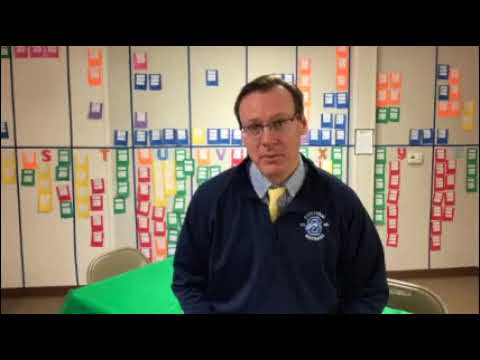The following article was contributed by Michael Wright, principal at the School of the Cathedral in Baltimore, Maryland.
What if you could design your school from scratch for your students?
What would it look like? How long would the day be? What would be taught? How would the students be taught? How would the students “feel” about the school?
Would students be required to sit in their seats for 6-8 hours a day listening to the teacher deliver instruction from the front of the classroom? How about worksheets? Would the students be given worksheet after worksheet because it keeps them quiet and on task? Would students be given repetitive homework that has little to do with actual learning and only focuses on memorization?
I suspect your answer would be no. Yet, that is the education many educators endured and sat through when growing up. I know I sure did. Now some may say, “I had some great teachers who instilled a passion for learning within me!” While I do not discount those experience’s, we must be mindful that the students who sit in our classrooms today are vastly different than the students that sat in these same classrooms just five or ten years ago. They are digital natives who have never experienced life without mobile devices or the internet and consume information and entertainment much differently than in the past.
Today’s 21st Century learner needs to be able to collaborate, communicate, problem solve and be creative. Moreover, the jobs and workforce they will enter, or perhaps create, will be much different than today and require mastery of these 21st-century skills. When schools rely exclusively on direct instruction, worksheets and “The Sage on the Stage,” we do this generation a disservice. Nor is it a fun or engaging way to teach. It is for this reason that we cannot continue to instruct students using old methodologies of instruction.
As Catholic School educators, we inhabit a unique and competitive space. We often do a fantastic job of developing within our students a deeper relationship with Christ. However, we must be intentional about meeting the needs of the 21st Century learner. Our fundamental goal is to guide students on their road to success. But, to make this happen, we must know the destination that our students are headed. When we can identify what we want the students to “know” and how they will demonstrate that they “know it” instruction has the potential to become exceedingly more engaging because teachers can use formative and summative assessment to inform their instructional choices.
Administrators must be deliberate and value the process of collecting data, reflecting on what the data tells us and setting goals for student growth by making time for faculty to meet on a weekly basis. When educators recognize that we can have high expectations for every student even though those expectations may not be the same for every student, the instruction can become more engaging, challenging and present students with choice. By giving students a choice in their learning, we invite them to feel empowered and become advocates for their learning.
When you walk into a school that creates time for teachers to reflect on the data they gather through assessments, set goals and plan accordingly, you can see and feel the sense of positivity and urgency within the walls of the school. Teachers may be planning cross-curricular projects, or you might notice the “productive noise” emanating from the classrooms, exemplars of student work are displayed, students are encouraged to maintain a growth mindset and professional conversations of faculty, students and staff are overhead throughout the school.
That is the type of school I wish I had experienced growing up. One that helped develop not only my strong moral and spiritual foundation but one that pushed and supported me to take agency in my learning. But then again, I was never very good at worksheets anyway.
